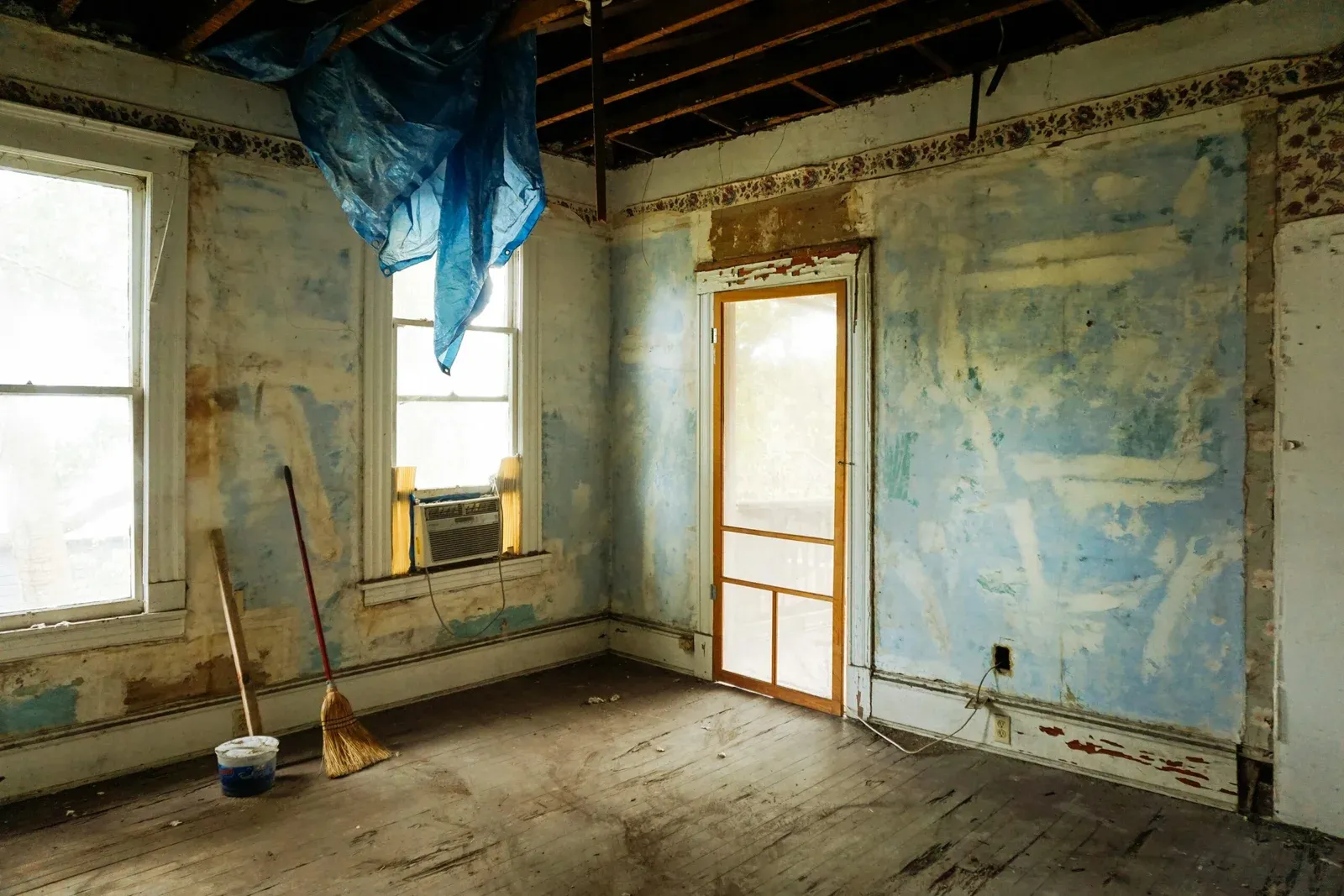Cracks and seepage are not just common problems. They are also troublesome problems. You can find them in ceilings, floors, or walls in the form of fractures or fissures. At first they may seem innocuous. However, they can grow to become major problems if ignored. Subsequently, they can reduce the aesthetic appeal and value of your home.
There are several ways to avoid cracks and seepage at home. If effectively applied they ensure your home stays durable enough to secure a safe and enjoyable living environment.
WAYS TO AVOID CRACKS AND SEEPAGE
The following ways tell how to avoid cracks and seepage at home.
HIRE A PROFESSIONAL THIKEDAAR
There is a popular saying, “Prevention is safer than cure.”It is better to avoid cracks and seepage by taking preventive measures early on. The cure lies in ensuring your home is built to the highest quality and reliability standards with attention to detail.
This is best done by hiring a skilled Thikedaar Home Construction.
Thikedaar home construction experts,
- Possess the requisite skills and knowhow to undertake home construction project and ensure it’s successfully built and completed.
- Understand the significance of laying a strong and sound foundation. This is critical to prevent structural movement and minimize the chances of cracks forming in ceilings and walls.
- Ensure the building materials used are of top quality. Poor quality materials like sub standard bricks or cement or plaster can result in water penetration and cracks in the walls.
ENSURE APPROPRIATE FOUNDATION DESIGN & SOIL TESTING
For any building, its foundation remains critical. It is its bedrock and backbone. Poor design or weak soil conditions cause significant problems. Problems like cracks and seepage.
To avoid cracks and seepage, it is crucial to
- Conduct before home construction soil testing. They help to understand the type of soil on which the home will be constructed and its load-bearing capacity. The Thikedaar based on these findings will be able to design a home foundation that supports the building’s weight and avoids its unstable settlement or shifting.
- Waterproof the foundation. It must be waterproofed sufficiently to avoid and prevent seepage from occurring. This will require application of waterproofing membranes or coatings. They prevent water from penetrating the foundation.
- Ensure proper drainage around the foundation. It helps to divert rainwater from the home and prevent seepage.
Homes located in areas with poor drainage or expansive soil are highly vulnerable. This weakens the building foundation. For a strong foundation, homes should have
Pile Foundations or Raft Foundations.
USE GOOD QUALITY BUILDING MATERIALS
Good quality building materials help to avoid and prevent cracks and seepage.
📞 Get in touch with the best construction companies in Delhi NCR. Click to learn more!
Low quality cement, sand, or bricks weaken the building structure. They grow cracks in floors or walls. To avoid cracks at home, use premium-grade materials. They are sturdy and can resist the roughness of wear and tear.
Good building materials means
- Cement and Mortar are mixed in the right proportions. This will ensure they stay strong and hold the building structure well. High-quality cement mix when applied evenly help to prevent the formation of cracks in the walls.
- Bricks sourced a reputable supplier. Else poor quality bricks tend to absorb moisture contributing to seepage.
Aside from the above, it is also essential to apply high-quality plastering technique to walls. They ensure plaster is applied in layers with each layer properly cured before the application of the next layer. This will help to avoid cracks caused by plaster applied unevenly or drying too quickly.
WATERPROOF THE WALLS AND ROOF
The infiltration of moisture is among the major cause of damage in buildings. Excess of moisture can cause decline in indoor air quality, and structural weakness.
To avoid seepage at home,
- Use high-quality waterproofing treatments. They should be used for interior as well as exterior of your home.
- Apply waterproof coating to exterior walls. Use specialized waterproofing paint or membranes. They create a barrier against water preventing moisture from causing in the walls cracks.
INSTALL PROPER DRAINAGE SYSTEMS
Proper drainage is necessary. Poor drainage systems result in cracks and seepage at home. They allow water to accumulate around the building foundation and stagnate. This leads to hydrostatic pressure and subsequently the formation of cracks. They can be a major problem during heavy rainfall. Increased water table close to the foundation can lead to seepage.
- Install a strong drainage system. Like downspouts, gutters, and French drains. They divert water away from the foundation.
- Grade the land around your home. They divert water away from the building foundation. This in turn helps to prevent seepage.
- Drains and gutters should be cleaned regularly. They prevent them from getting blocked by debris or leaves.
CONTROL MOISTURE LEVELS INSIDE THE HOME
Moisture and humidity inside the home create problems. They cause the building foundation to shift its position unevenly. This leads to cracks in the floors and walls. They can also weaken the building materials contributing to seepage. Hence, keeping moisture levels inside your home is critical.
To avoid cracks and seepage,
- Install dehumidifiers in damp areas. Like the bathroom, basement, etc. They reduce humidity levels and prevent the build-up of moisture.
- Keep your home properly ventilated. Install exhaust fans where required and possible. Like in the bathroom and kitchen. They help to remove excess moisture.
- Fill up cracks and gaps in doors and windows. They prevent the entry of cold air into your home.
Use moisture-absorbing products like Desiccants or Silica. They maintain and keep at an optimal level indoor climate.
REGULAR MAINTENANCE AND INSPECTION
It’s important to inspect your home regularly. They help to identify early on potential problems and maintain the house in good condition, free from cracks and seepage.
- Inspect periodically the foundation, drainage systems, walls, and roofs. They help you to find early on potential issues and take remedial steps to address them immediately. Make sure to also check the walls and roofs for cracks, especially around doors and windows. They often have small cracks. Seal them using caulk or filler. If the cracks are bigger, it indicates a serious structural problem in need of professional help. Similarly, check for damaged tiles and ensure the gutters are free from debris.
- Inspect waterproofing treatments. Make sure they are intact and in good condition. If required, apply waterproof coatings. This is especially required after severe weather conditions like heavy rains or intense cold wave.
Regular proper maintenance helps to not only avoid seepage at home but also help to prolong the life of your home property as well and keep it in good condition.
CONCLUSION
Cracks and seepage are common. As a homeowner, you should know what causes them and what preventive steps need to be taken to avoid and prevent their formation. This will ensure your home property stays in good condition for long. To avoid cracks and seepage, hire a skilled Thikedaar home construction. They use good quality materials, waterproof the structure, maintain proper drainage, and finally, conduct regular inspection and maintenance.
💡 Turnkey Contractor services you can rely on – click to see!
Leading turnkey contractor Thikedaar offers the right fusion of knowledge, experience, and comprehensive services. Hiring Thikedaar for your home construction means your project is in safe and capable hands. They help to maintain your home’s structural integrity and also improve the overall property value.
FAQ
How to avoid cracks and seepage during home construction?
Make sure the contractor uses
- High-class materials, proper waterproofing techniques, and proper curing of
walls. - Proper construction practices and techniques.
Aside from this, discuss with your contractor on what other steps needs to be
taken. The contractor will only be too glad to offer assistance as they recognize the
importance of a strong foundation for a house.
What kind of practices help to avoid cracks at home?
Ensure your house construction is done with strong concrete and maintains
sufficient expansion joints. Aside from this, quality construction materials and
proper maintenance of plumbing systems will also help to avoid cracks at home
resulting from leaks.
In what way waterproofing will help to avoid cracks and seepage in my home?
It creates a protective barrier. This helps to prevent water from seeping into the
walls as well as foundation. Try to use proper waterproofing methods. Methods like
specialized waterproof material, sealants, application of water-resistant coatings,
during home construction.
Does improper drainage lead to cracks and seepage?
Yes. They cause water to accumulate around the house foundation. This puts
pressure on the walls resulting in cracks and seepage. To prevent such issues, the
drainage system should be properly designed with clear slopes away from the
house foundation.
How can Thikedaar help to avoid cracks and seepage?
First of all it depends upon what kind of Thikedaar you have hired. A qualified
and certified Thikedaar plays a prime role ensuring proper execution of construction
processes. They oversee the whole process professionally. This includes proper
alignment of walls, installation of waterproofing systems, etc.
Which areas in the home are prone to cracks and seepage?
Bathrooms, Kitchens, and Basements. They are more vulnerable to seepage.
This occurs due to their continual exposure to water. Balconies, foundation walls,
and roofs are also susceptible. They develop cracks and seepage if they are not
properly waterproofed and maintained.
Is it possible for me to repair cracks and seepage on own?
It is possible only in the case of minor cracks. They can be set right with caulk or
sealants. Otherwise, it is better to take the help of a professional source like leading
house construction company Thikedaar. Thikedaar specializes in identifying
accurately the root cause of cracks or seepage and provide solutions to prevent
further damage.



